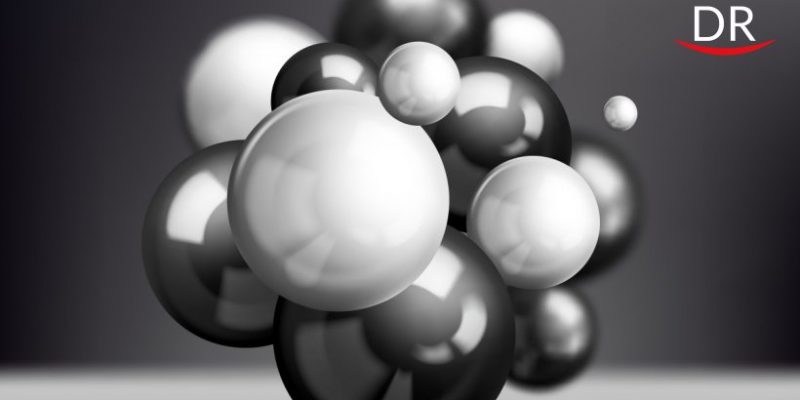The positive effect of electromagnetic radiation on the human body is no longer in doubt. Perhaps in the future, quantum dentistry will play a big role, but at the moment this industry is at the initial stage of development.
Principles –
Quantum dentistry uses the same principles of quantum physics and understanding of quantum energy for its diagnosis, treatment and prevention of diseases in the oral cavity. Of course, it is necessary to conduct a number of basic clinical studies, but now we can say that the development of quantum dentistry will significantly improve dentistry as a whole.
The basic principle of quantum physics is, everything consists of waves and particles too. That is, a quantum can be described due to the dual nature of electrons, which exhibit the properties of both a wave and a solid particle. Light in its essence is also characterised by a dual nature. It propagates in space like a wave, but at the same time at an infinite point it behaves like a particle. A photon is an elementary light particle, consisting of an energy particle and a quantum that forms electromagnetic radiation.
Upon contact with a living organism, an electromagnetic field acts on molecules and cells through chain reactions and allows the biological system to achieve a state of balance.
Applications –
To date, very little research has been done on how laser radiation in the microwave ranges and hyperfrequencies affects the human body. The effects of the influence of chromatic, electromagnetic radiation of low frequencies and oscillating radiation on the state of health are not fully understood.
In quantum dentistry, the diagnosis of a disease is based on the principle of recording changes in energy parameters of the human body, thus treatment must be carried out by balancing these parameters in relation to the normal range using electromagnetic radiation.
Infrared thermography is a non-invasive, safe and highly sensitive diagnostic method. It allows you to register infrared radiation on the surface of the body. It was found that the temperature on the surface of the skin gradually decreases in the direction from the head to the limbs. The presence of inflammatory, infectious or neoplastic lesions of the oral cavity provokes the occurrence of the effect of thermal asymmetry and changes in the temperature range characteristic of the normal state. The method of infrared thermography is extremely important for the diagnosis of malignant diseases, atherosclerosis, thrombosis and is often used to diagnose common dental diseases.
Differential reflectometry is based on the assessment of changes in the polarisation wave vector, which is reflected from specific points on the patient’s skin. This method is used in various fields of medicine, for example, in cardiology, gastroenterology, etc.
As for therapy in the framework of quantum dentistry – lasers and light emitting diodes have been used in the field of medicine and dentistry since the 1960s. They are used to prepare tooth cavities (minimising the level of noise and vibration), and also allow you to stop pain and achieve the elimination of infectious lesions.
Despite the modern technologies available to the dentist,the problems of noise, vibration and pain during certain interventions remain completely unsolved and manipulations on soft tissues using outdated methods sometimes only aggravates bleeding and complicates the healing process. To solve the above problems, a laser is ideally suited to adequately cope with the pathologies of both soft and hard tissues of the oral cavity.
Contraindications –
Contraindications for the use of quantum therapy include
- acute infectious lesions
- hematopoietic diseases
- schizophrenia
- septic and oncological pathologies
- epilepsy etc.
Quantum Concept in the Mechanism of Development of Oral Cancer
The metabolic basis of the cancer development mechanism is supported by evidence that high-calorie nutrition in European countries and North America is a good platform for cancer cell growth.
The quantum theory of regulation of cell metabolism states that the basis of the problem is maintaining a balance between the metabolic level of cells relative to the pathways of oxidative phosphorylation and glycolysis, which, in turn, depend on different connections between ATP phosphorylation and the signal transmission chain by electrons. The metabolic level determines the conductivity of protons and their potential in the metabolic network system. ATP production rate is a derivative of the overall implementation of the entire energy production process in the body.
It was found that curcumin and plant-based therapies (the choice of which varies for patients) is a therapeutic approach that promotes energy modulation in the development of cancer processes. This, in turn, helps prevent the development of cachexia and contributes to an increase in vitamins C and E. This approach also helps prevent the process of lipid peroxidation and DNA damage. Thus, metabolic corrections form a new paradigm for cancer treatment.
New Theory or Proposed Quantum Mechanism for the Development of Oral Diseases
The process of development of inflammation contributes to the formation of conditions for the development of precancerous lesions which further progress to the level of malignant disease. Similar mechanisms are responsible for the development of gingivitis and periodontitis. Local changes in epithelial tissue can be an indicator of changes in the activity of cytokines, which is also associated with early cell polarisation. Such symptoms are, in fact, early signs of a change in the profile of cytokines, which entails the development of cancer. An increase in the energy quantum in altered cells even locally leads to critical changes in the mechanism of control of epithelial tissue function or immune / inflammatory response, which should normally prevent the development of malignant tumors.
To confirm this theory, studies are carried out on the cells of the oral epithelial cells, obtained from saliva and cells of the mucous membrane of the cheek, which were taken from patients with oncological processes in the oral cavity and other dental diseases. In addition, other epigenetic concepts for the development of dental diseases are being tested, for example, those that include the role of epigenetic variations and epimutations. The latter can provoke unpredictable structural changes that, from the point of view of transgenerative heredity, change the role of higher organisms in the distribution of resources with microorganisms which provide for the role of epigenetic variations and epimutations.
Subatomic Mechanism of Oral Diseases
We can assume that the basic model of diseases of the oral cavity, as well as malignant formations, can be accepted as current for its further development. Oral cancer cells or other inflammatory cells, as well as specific biomarkers that can enter the systemic circulation and migrate through it, are essentially similar to a coherent wave. The extracellular matrix, thus, can be considered as an undifferentiated medium, which is characterised by holographic properties. Testing of this hypothesis takes place similarly using different cells of the oral cavity taken from patients with different dental pathologies.
Conclusion
Quantum dentistry is a new industry in dental practice that is just starting to develop. The task of this science is to explain the mechanism of the development of diseases of the oral cavity and achieve complete cure in the future. For implementation, it is necessary to provide a multidisciplinary analysis of existing problems, based on available technologies, which in the future can play a revolutionary role in dental practice.




















Comments